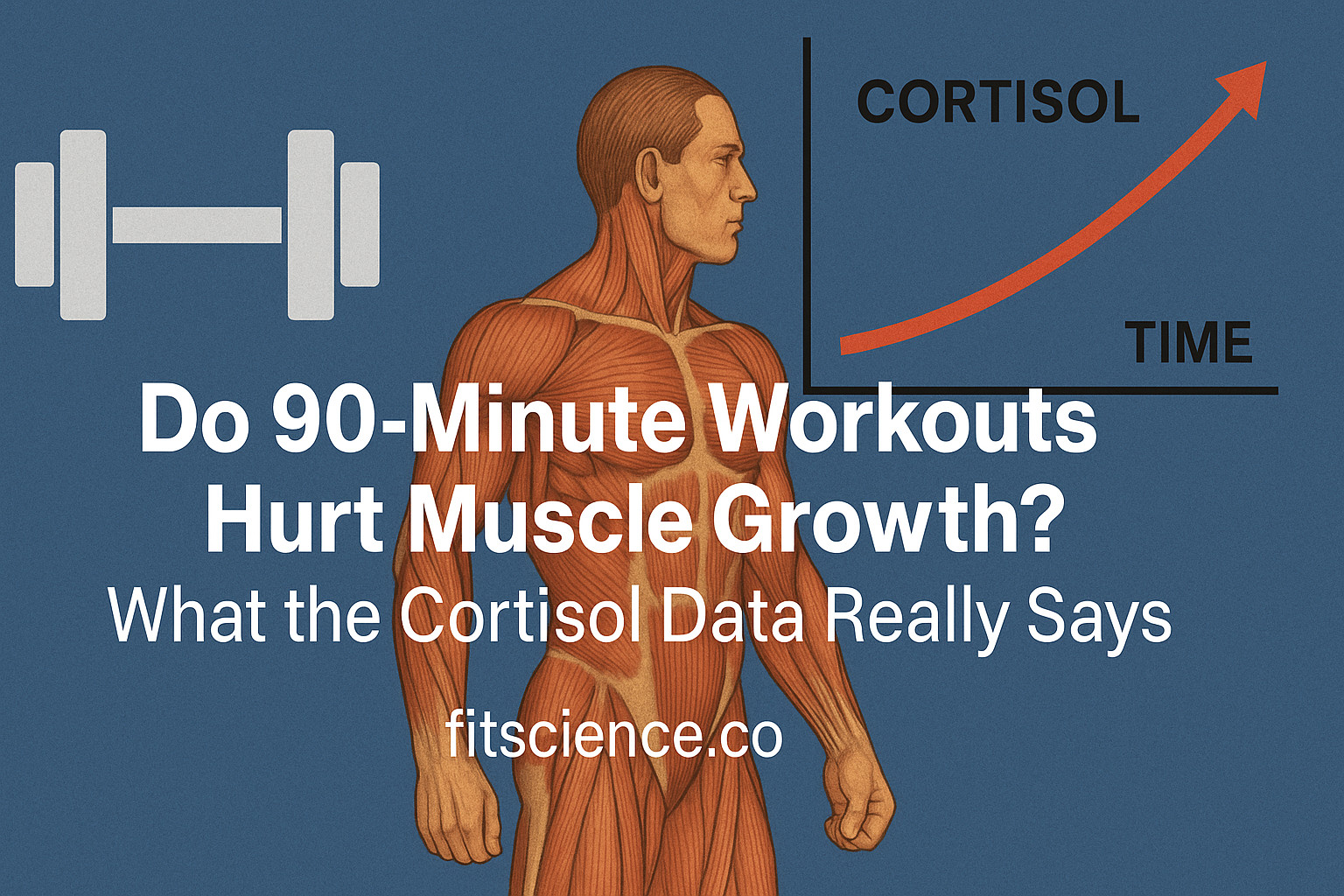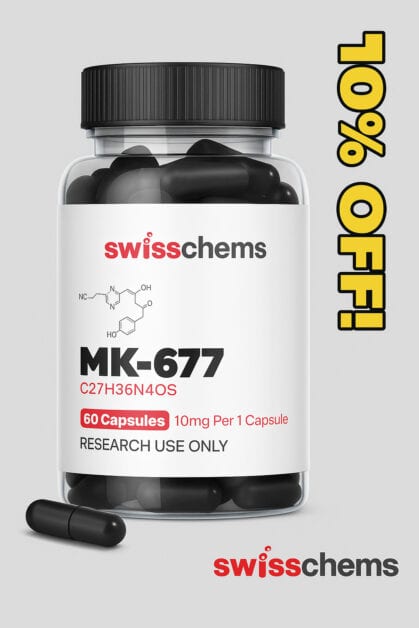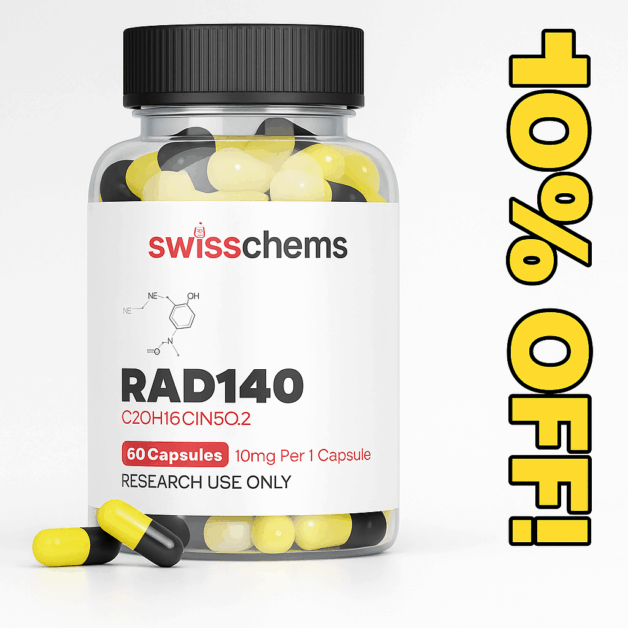Do 90-minute workouts hurt muscle growth, or is it just gym myth? Many bodybuilders have heard the warning: “Train too long and you’ll spike cortisol and kill your gains.” The truth is more nuanced. While there’s no magic timer where muscle building shuts off, research shows that as hard training sessions push past 60–90 minutes, cortisol exposure rises, glycogen drops, and rep quality starts to decline—factors that can tip the balance away from growth and toward recovery debt. This guide breaks down the real science behind cortisol, long workouts, and muscle hypertrophy, and gives you evidence-based strategies to get maximum results without paying the catabolic price.
Cortisol 101: Why Lifters Even Care
Cortisol is a glucocorticoid released under physical and psychological stress. In muscle tissue, chronically high cortisol promotes protein breakdown and suppresses synthesis by activating pathways like the ubiquitin–proteasome and lysosomal systems. It can also blunt the anabolic machinery that drives muscle protein synthesis.
On top of that, when training runs long and glycogen runs low, AMP-activated protein kinase (AMPK) becomes more active. AMPK can directly interfere with mTORC1, the central hub for muscle protein synthesis, until energy status is restored. That’s not an automatic “no growth” switch, but it is a biochemical signal that shifts priority away from building new contractile proteins until fuel returns.
How Fast Does Cortisol Rise During Training?
Two timelines matter:
-
General stress response: Cortisol often peaks about 20–40 minutes after stress begins, which means the longer the stressor (in this case, training), the greater the total exposure.
-
Resistance training response: Lifting raises cortisol in proportion to total work and density. High-volume, short-rest sessions drive cortisol higher than heavy, long-rest sessions.
As sessions drag on, especially past the 60–90 minute mark, cortisol exposure climbs. For many lifters, that’s also when energy starts running low and technique begins to slip.
Is 90 Minutes a Real Threshold?
Not exactly. There’s no precise minute where growth stops. But once a hard hypertrophy session crosses 60–90 minutes, the odds increase that you’re training in a state of:
-
Lower glycogen stores
-
Higher cortisol load
-
Reduced rep quality and bar speed
That combination isn’t ideal for maximizing growth stimulus. A well-fed, focused lifter can sometimes train past 90 minutes without a big downside. But an under-fueled, high-stress, marathon workout is another story entirely.
Does Higher Cortisol from a Long Session Kill Gains?
Acute hormone spikes—whether anabolic or catabolic—don’t directly predict who will grow most from training. Long-term hypertrophy is driven more by mechanical tension and adequate weekly volume than by a single day’s post-workout hormone readings.
But chronically high stress, inadequate recovery, and consistently low testosterone-to-cortisol ratios are associated with reduced performance and slower progress. So while one long session won’t erase your gains, making every workout a two-hour grind will likely cost you in recovery and training quality over time.
Fuel Availability: The Hidden Lever Inside the “90-Minute Rule”
Prolonged training sessions tilt the fuel balance against you. Two key strategies help:
Carbohydrate availability: Consuming carbs before or during training reduces glycogen loss and can blunt the cortisol rise compared to going in flat. Even 30 g carbs per hour can make a measurable difference in hormone levels and output.
Amino acid availability: Taking EAAs or whey pre-workout supplies building blocks during training. Pairing carbs with EAAs mid-session can suppress cortisol and reduce protein breakdown, especially in long, glycolytic workouts.
Combine both and you not only drop the “cortisol tax,” but also keep performance higher deep into the session.
What Actually Goes Wrong in Long, Under-Fueled Workouts
-
Rising cortisol exposure: More total stress load and recovery cost.
-
Energy-sensing brake: Low glycogen + high AMPK activity antagonizes mTORC1, slowing anabolic signaling.
-
Declining rep quality: Fewer high-quality, stimulative reps late in the session.
-
Overreaching risk: Chronic high stress + inadequate recovery can erode performance and muscle retention.
Programming with the Science in Mind
-
Keep most sessions in the 45–75 min range for hypertrophy work. Treat 90 minutes as a soft ceiling unless you’re fueling during the workout.
-
Split volume if needed. Two shorter sessions (AM/PM or separate days) beat one draining 2-hour marathon.
-
Fuel before and during. For sessions past an hour, have 30–40 g carbs + 20–25 g whey or 10–12 g EAAs pre-workout, and consider another 20–30 g carbs mid-session.
-
Adjust rest periods. On long days, extend rests for big lifts to maintain bar speed and rep quality.
-
Focus on quality volume over weeks, not single-day heroics.
The Balanced Verdict
There’s no magic 90-minute cliff where muscle growth stops. Acute cortisol spikes from long sessions aren’t the deciding factor in hypertrophy. But as workouts stretch past the 60–90 minute range, especially without fuel, the conditions become less favorable: cortisol rises, glycogen drops, and rep quality suffers.
Actionable fix: Keep hard training sharp and focused, split volume when needed, and fuel longer sessions with carbs and EAAs to minimize the catabolic cost. That’s the simplest way to keep making gains while avoiding the recovery debt that comes with endless marathon workouts.











